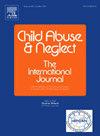引诱未成年人进行接触性性虐待罪:被定罪罪犯的人口统计模式和犯罪记录探究
IF 3.4
2区 心理学
Q1 FAMILY STUDIES
引用次数: 0
摘要
背景儿童性虐待(CSA)是一个严重的公共卫生问题,其中有一小部分犯罪是由陌生人所为,通常是通过引诱来实现的。本研究旨在分析因引诱未成年人而被定罪者的人口统计学特征和犯罪史,并考察定罪前后所犯罪行的类型。参与者和环境研究对象包括俄勒冈州一个县在 2011 年至 2021 年期间被判犯有 "引诱未成年人 "罪的所有人员(N = 115)。研究方法研究使用人口统计学数据和频率来概述哪些人被判犯有引诱罪,以及他们在定罪前后还犯有哪些其他罪行。定罪前,35.65%的人曾被逮捕过,其中最常见的是袭击(34.15%)和违反缓刑规定(24.39%)。定罪后,98.26%的人再次被捕,其中引诱(60.34%)和网上性堕落(41.38%)是最常见的指控。针对儿童的犯罪是最常见的犯罪类型。定罪后与儿童有关的犯罪(包括发展为商业性剥削和儿童性贩卖)的高发率突出表明,有必要采取全面的干预措施、进行有力的监控和持续的社区教育,以防止对儿童造成进一步的伤害。未来的研究应在不同的司法管辖区复制这项研究,以确定地区差异,检查司法管辖区定义与犯罪模式之间的关系,并评估各种监督和监测策略在减少诱骗定罪者再犯方面的有效性。本文章由计算机程序翻译,如有差异,请以英文原文为准。
The crime of luring a minor for contact sexual abuse: Exploration of demographic patterns & criminal records of convicted offenders
Background
Child sexual abuse (CSA) is a significant public health problem, with a small but important subset of crimes committed by strangers, often facilitated through luring. Understanding the characteristics of individuals who engage in luring is essential for developing effective prevention and intervention strategies.
Objective
This study aimed to analyze the demographic characteristics and criminal histories of individuals convicted of luring a minor and to examine the types of crimes committed before and after conviction.
Participants and setting
The study included all individuals (N = 115) convicted of “luring a minor” between 2011 and 2021 in one county in Oregon.
Methods
The study used demographic data and frequencies to provide an overview of who is being convicted of luring and what other crimes they have committed prior and after their conviction.
Results
Most were male (97.39 %), White (70.43 %), and the average age at first arrest was 33.06 years. Before conviction, 35.65 % had prior arrests, with assault (34.15 %) and probation violations (24.39 %) being most common. After conviction, 98.26 % were rearrested, with luring (60.34 %) and online sexual corruption (41.38 %) being the most frequent charges. Crimes against children were the most prevalent type of crime.
Conclusions
This study provides valuable insights into the characteristics and criminal histories of individuals convicted of luring minors. The high prevalence of child-related crimes after conviction, including progression to commercial sexual exploitation and child sex trafficking, underscores the need for comprehensive interventions, robust monitoring, and ongoing community education to prevent further harm to children. Future research should replicate this study across different jurisdictions to identify regional differences, examine the relationship between jurisdictional definitions and crime patterns, and evaluate the effectiveness of various supervision and monitoring strategies in reducing recidivism among those convicted of luring.
求助全文
通过发布文献求助,成功后即可免费获取论文全文。
去求助
来源期刊

Child Abuse & Neglect
Multiple-
CiteScore
7.40
自引率
10.40%
发文量
397
期刊介绍:
Official Publication of the International Society for Prevention of Child Abuse and Neglect. Child Abuse & Neglect The International Journal, provides an international, multidisciplinary forum on all aspects of child abuse and neglect, with special emphasis on prevention and treatment; the scope extends further to all those aspects of life which either favor or hinder child development. While contributions will primarily be from the fields of psychology, psychiatry, social work, medicine, nursing, law enforcement, legislature, education, and anthropology, the Journal encourages the concerned lay individual and child-oriented advocate organizations to contribute.
 求助内容:
求助内容: 应助结果提醒方式:
应助结果提醒方式:


